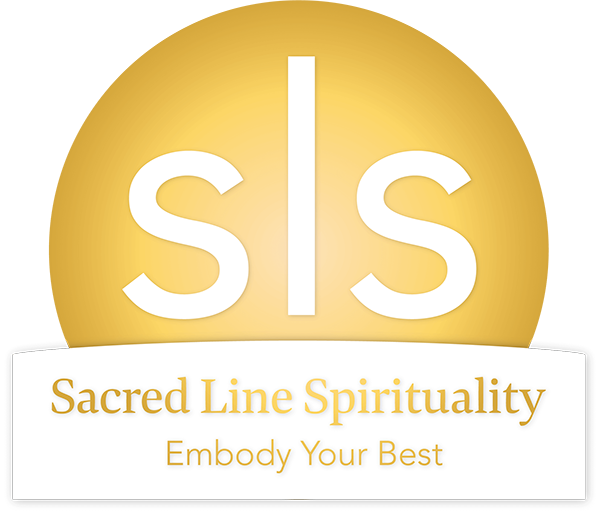As February 14th snuggles in, it’s time to ask who’s your valentine?
Does your own name make the top ten?
In her 1943 novel, The Fountainhead, author and philosopher Ayn Rand, shared some timeless wisdom, “To say ‘I love you’ one must know first how to say the ‘I’.”
Buddhists would agree that the foundation of love is self-love. In the ancient Buddhist meditation practice of Metta or Lovingkindness, you begin with yourself. You can’t spread the love to family, friends and beyond without first extending compassion toward yourself. Every flight attendant will tell you that you must put on your own oxygen mask first. Love begins with “I”. To say “I love you” with the deepest integrity, you must have a strong sense of identity.
In the immortal words of the British rock band The Who, “Who are you?”
From a mental health perspective, this might be the biggest crisis of modern times. Oxford dictionary defines identity as, “the fact of being who or what a person or thing is”. Merriam-Webster phrases it this way – “the distinguishing character or personality of an individual.” In the current identity fluid environment, who you are can become an increasingly difficult question to answer. However, crisis is the gateway to growth.
Rather than philosophizing or thinking it out, the identity answer may be found by returning to the root. Specifically, the origins of the word. In Atomic Habits, James clear tells us that the word ‘identity’ comes from the Latin words essentitas, meaning ‘being’, and identidem, translated as repeatedly. Putting it together, identity is literally your “repeated beingness.”
In Atomic Habits, James clear tells us that the word ‘identity’ comes from the Latin words essentitas, meaning ‘being’, and identidem, translated as repeatedly. Putting it together, identity is literally your “repeated beingness.”
That’s easy AND somewhat scientific. To know who you are, observe what you repeatedly do and who you repeatedly are. Study your expressed nature to know your true nature. If you’re a teacher, you will see yourself teaching. A sculptor observes themselves sculpting. Parent, parenting. However, doing is relatively superficial. The actions we take express life stages, experiences, and responses to conditions. You’re a studying student until you graduate, a son or daughter until your parents pass, a worker before a retiree.
Being goes deeper. It lies underneath the doing. Existence is the foundation to action. Doing, external expression, often distinguishes a person from others. Actions are individual and unique as per the definitions of identity above. But identity viewed from a state of existence can be unifying rather than differentiating. Collins dictionary speaks to this broader identity definition, “the condition or fact of being the same or exactly alike; sameness; oneness.” The human identity is an example. Despite different generations, roles, professions, cultures, languages, living conditions, and geographical locations, we are all human. We are born from mothers. We all have a father, a body, a mind, have experienced physical and emotional pain, longed for happiness, smiled, laughed, gone to bed, woke up, eaten, and enjoyed.
Identity is a continuum, extending from personal to global. As personal identities fluctuate and flow, there is an opportunity to recognize the universal. Rather than what separates us, see what binds us together. The practice of Lovingkindness is based on the premise that compassion is our essential nature. It is the ‘being’ in human. Love is our common identity that, openly expressed or deeply hidden, underlies all doing.
Identity and integrity overlap. Integrity is the state of being whole and undivided; the quality of being honest and having strong moral principles. (Oxford Dictionary) Underlying all actions is an essential goodness, a drive to be safe, happy, loved, and content. Lovingkindness recognizes this common struggle.
The practice starts with you. Expressing lovingkindness toward yourself, you repeat:
May I be safe.
May I be happy.
May I live with ease.
Next, you extend this circle of care outward, wishing someone close to you the same, then, a neutral person; someone you don’t feel positively or negatively towards. Next, someone that you may have negative feelings toward. Repeat the three phrases for them, wishing them well. Finally, direct the phrases to all living beings.
Acknowledging and accepting your own inherent goodness provides the doorway to acknowledging and accepting the goodness in all.
Similarly, So Hum Mantra Meditation is based on this ultimate identity. “So Hum” is Sanskrit for “I am That.” The nature of existence goes beyond words, so it is simply referred to as ‘That’. The mantra supports the union of the individual, “I”, with universal cosmic consciousness, “That.”
All life practices So Hum. You’re practicing it right now. So Hum is the sound of the breath. ‘So’ is the sound of inhalation. ‘Hum’, the sound of exhalation. Every breath is reminding you of your true identify as universal reality; a unique expression of life and life itself. Consciously practiced, no words are used. You simply concentrate on the breath which chants So Hum for you.
Ayn Rand developed Objectivism, a system of philosophy that described man as a heroic being, with his own happiness as the moral principle of his life and productive achievement as his noblest activity.
Practice So Hum Mantra Meditation for 2-5 minutes followed by Lovingkindness, wishing safety, happiness, and ease to yourself, a loved one, a neutral person, a difficult person, and all living beings. Following this thread of expanding love, you will develop clarity on your own unique identity and the gifts that define you while also being inspired to productively express your best for the benefit of all.
Who do you love?
With practice, perhaps the world is your valentine.
